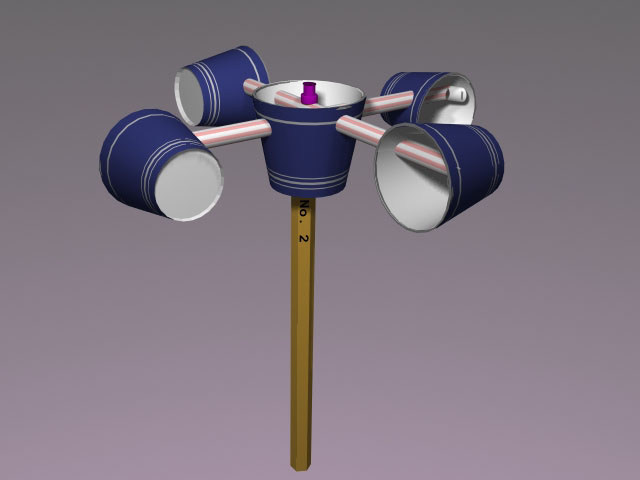

Vane anemometers, also known as wind vanes, are similar to cup anemometers but use a vertical vane instead of cups. The speed of the cups is used to calculate the wind speed.Ĭup anemometers are often used in weather stations and ships, as they are simple, reliable, and relatively inexpensive. They consist of three or four cups attached to horizontal arms, which rotate with the wind. Wind measuring gadgets come in a variety of shapes and sizes.Ĭup anemometers are the most common type of anemometer. Nevertheless, one thing never changed - anemometers continue to be an essential tool for understanding and predicting weather patterns.

The history and development of anemometers have been marked by several innovations and improvements, from early mechanical designs to modern electronic instruments. They are used in a broad range of applications, including weather forecasting, aviation, and renewable energy. Today, anemometers can be found in various sizes and shapes. It used a thermocouple to measure wind speed. The first electronic anemometer was invented in the 1930s. In the 20th century, anemometers became increasingly sophisticated and versatile. The cups rotated horizontally with the wind while a combination of wheels recorded the number of revolutions in a given time. This instrument consisted of four hemispherical cups attached to horizontal arms. His creation was then fine-tuned by Irish researcher John Thomas Romney Robinson in the 1840s, who invented the hemispherical cup anemometer. In the 18th century, British scientist John Dalton used a simple anemometer with four hemispherical cups to measure wind speed. This design was improved upon by Italian scientist Evangelista Torricelli in the 1640s, who added a barometer to measure air pressure. The angle of inclination of the disc indicated the wind velocity. The history and development of anemometers can be traced back to the 1450s when Italian artist and architect Leon Battista Alberti suggested the theory of a device to measure wind velocity.Īlberti's invention was a mechanical anemometer with a disc placed perpendicular to the wind direction. From Early Wind Measurement Devices to Modern Instruments It is an essential tool for meteorologists, who study weather patterns, and physicists, who study and learn how air moves.īut anemometers can also be used in engineering, aviation, and many other fields. The anemometer is a device used to measure wind speed and wind pressure.


 0 kommentar(er)
0 kommentar(er)
